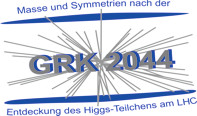Solar neutrinos in the ultimate dark matter detector
The DARWIN collaboration proposed to build a multi-ton dark matter detector. Such instrument does not only have an excellent sensitivity for dark matter in form of WIMPs, but it also to solar neutrinos, particles that pass through Earth with a flux of aboput 70 billion particles per cm² and second.
A new study shows that DARWIN, a 40t liquid xenon observatory with a very low background and a low threshold, will be capable to measure five solar neutrino components via elastic neutrino-electron scattering: pp, 7Be, 13N, 15O and pep, where the sensitity of the latter three would be optimized by depleting the target in 136Xe.
The study is based on a realistic background model for the detector which was co-developed by the ERC-funded ULTIMATE team. The high statistics measurement of the pp-flux will allow for the first precision measurements of the weak mixing angle sin²(2θ) and the electron-neutrino survival probability Pee at low energies (see Figure). The precise measurements of the pp and 7Be fluxes will allow us constraining the solar luminosity and the combination of all flux measurements will shed light on the metallicity of solar models.
Publication:
J. Aalbers et al. (DARWIN),
Solar Neutrino Detection Sensitivity in DARWIN via Electron Scattering, arXiv:2006.03114.





